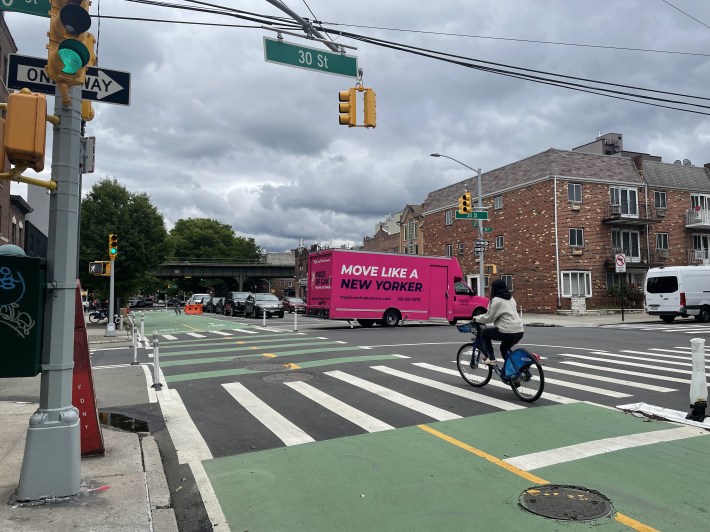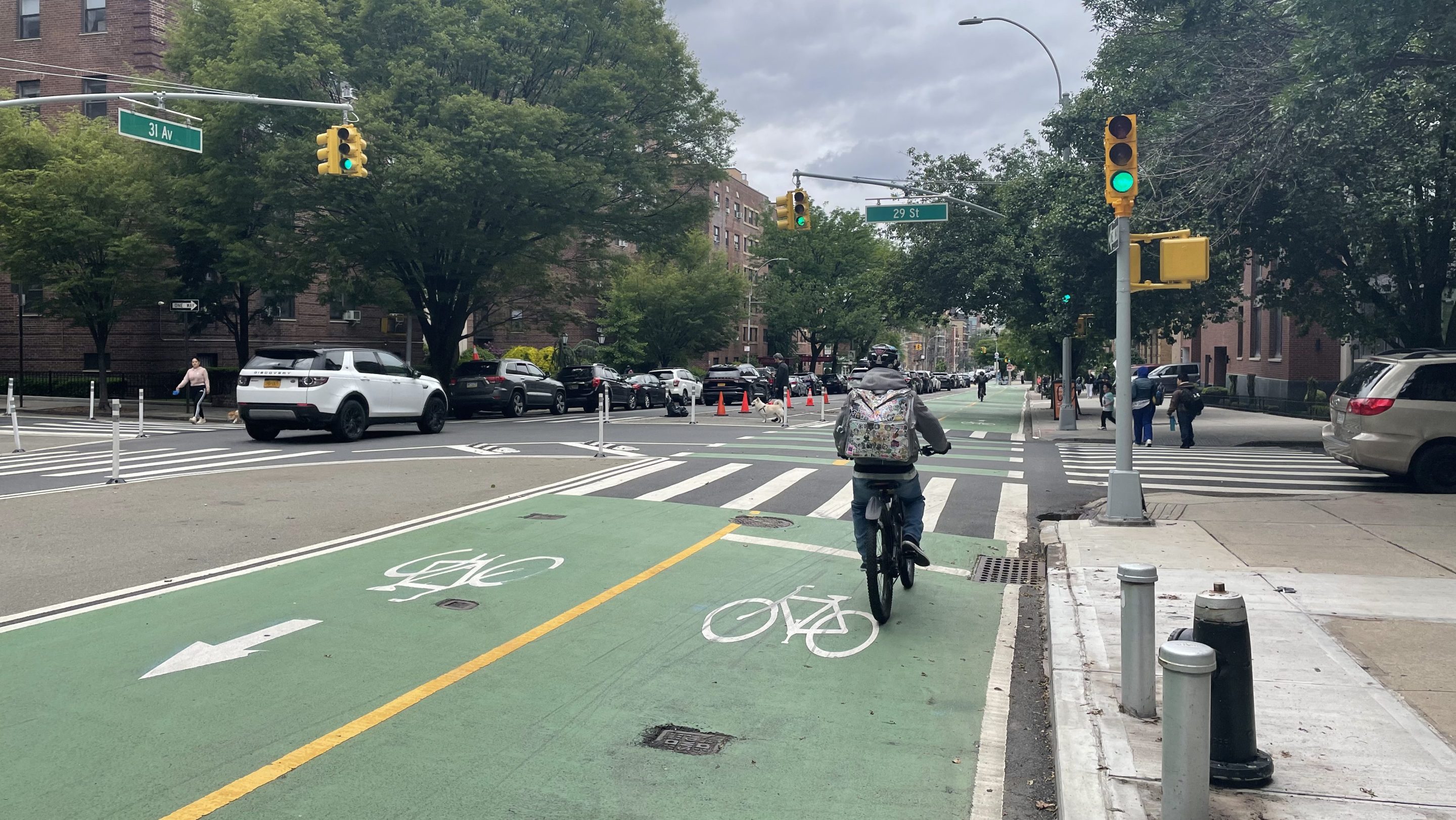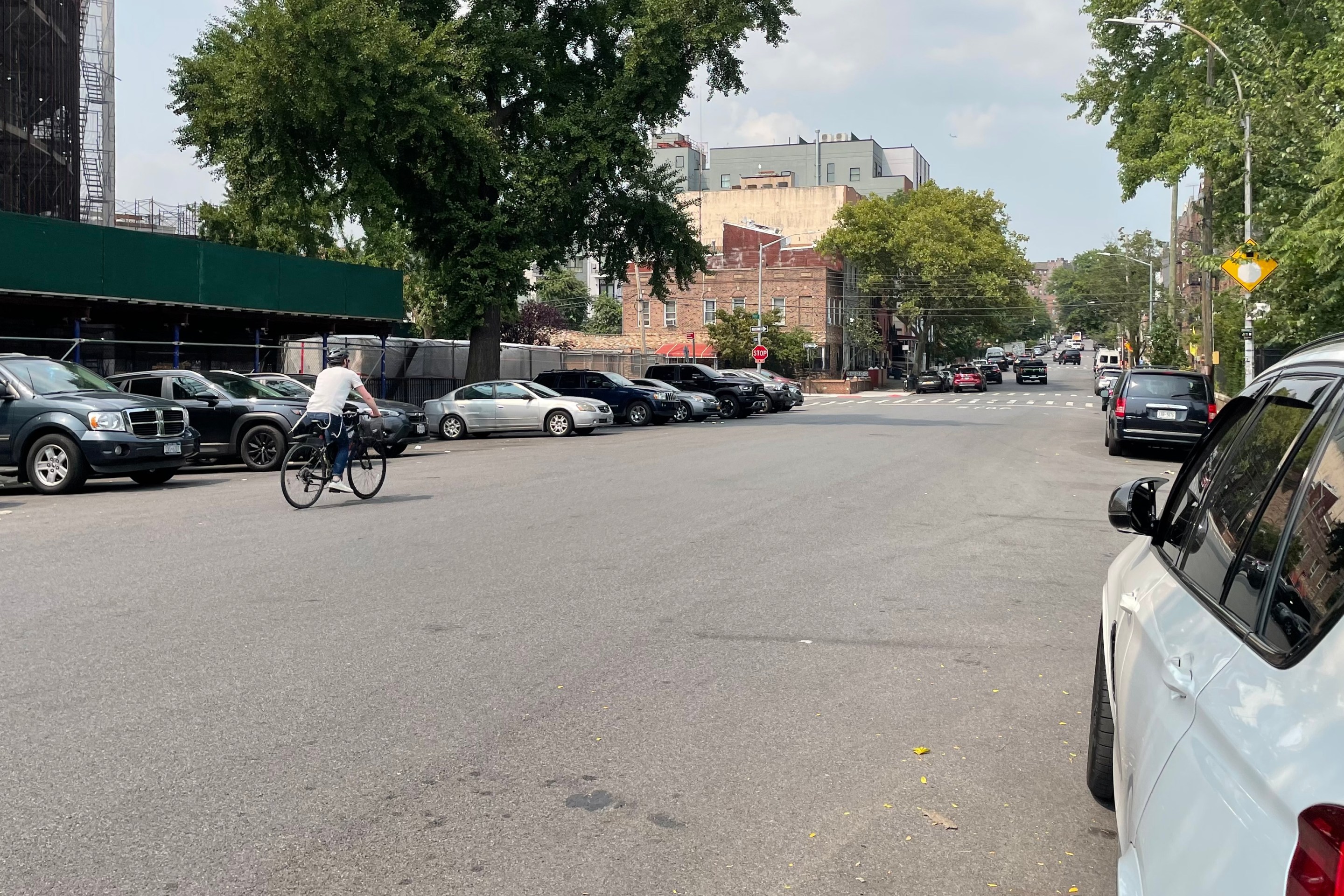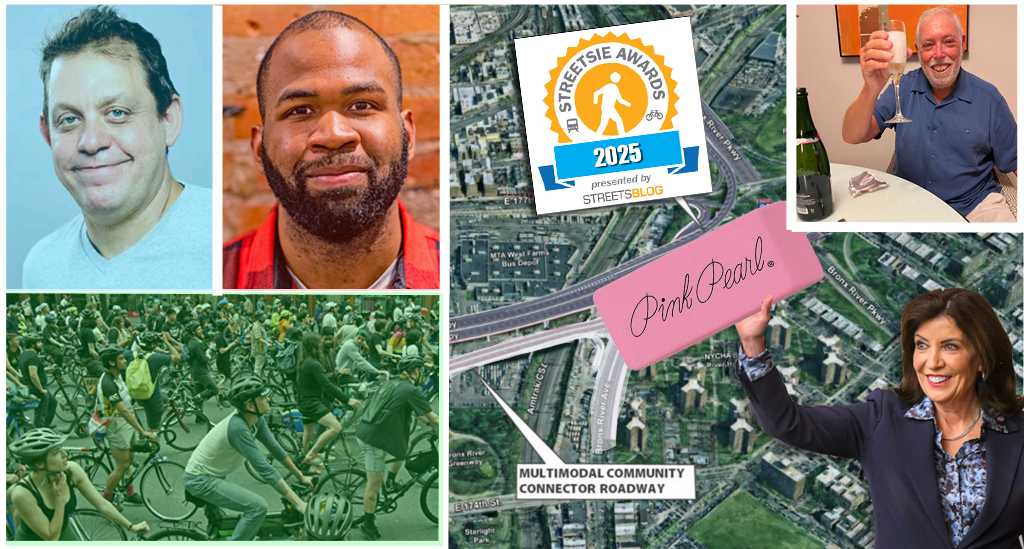Everything's bigger in Queens — at least in terms of bike infrastructure.
New York City's widest protected bike lane is approaching its final form on 31st Avenue in Astoria. The 1.1 mile "bike boulevard" reclaims public space from private automobiles and gives back to the majority of road users in the area — cyclists and pedestrians, long overdue for a safer street-level experience.
Streetsblog visited the bike boulevard last week. Here's what we observed:
The bike lane
The bike lane itself stretches 16 feet across, with two 8-foot lanes in each direction. Wide painted buffers separate the two-way bike lane from a parking lane that provides cyclists protection from car traffic.
Car traffic, meanwhile, is one-directional on the strip.
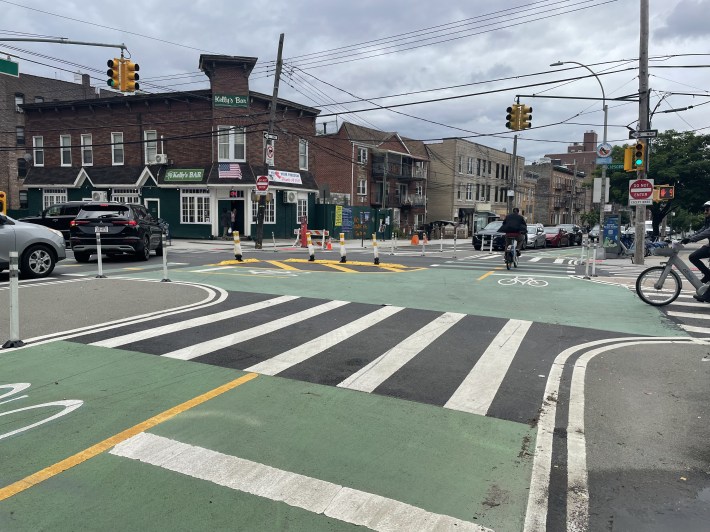
At the intersection of 31st Avenue and Crescent Street intersection, the bike boulevard intersects with latter street's own two-lane protected bike lane. There, the Department of Transportation banned parking, raised the crosswalk and installed flexible bollards to maintain visibility and slow driver and cyclist turns.
The bike lane narrows to about 10 feet wide with each lane being 5 feet wide past Crescent Street, but it remains protected and two-way. The one-way car lane direction, however, switches to the other direction. This narrower width continues down to Vernon Boulevard, where 31st Avenue meets the East River.
Along the avenue, there are now bump-outs and medians to provide a safer pedestrian experience.
Novel design
One of the key things that makes this redesign so much safer for pedestrians and cyclists is that the DOT employed "modal filtering" to keep vehicular traffic light and slow on the avenue. By switching the direction of vehicular traffic every few blocks, DOT can prevent drivers from using the street for anything other than local access. That should keep vehicular traffic — and vehicular crashes — to a minimum, making the safer for pedestrians and cyclists.
When Streetsblog was on the scene, vehicular traffic was very light. Many of the cars and trucks we did see were picking up or dropping off at local businesses.

Beyond the tracks
East of 31st street, under the elevated subway tracks, the protected bike lane goes away and turns into a one-way shared car-and-bike lane in one direction and a painted, unprotected bike lane in the other. Pedestrian bulb-outs still line this intersection to provide safer, shorter crossing distances for people on foot.
Astoria's weekly weekend open street runs on 31st Avenue from 33rd Street to 35th Street — a hunk of the stretch of the street without any protected bike lane. The two-way protected bike lane resumes at 35th Street to Steinway Street.

Mopeds and other obstacles
The law prohibits moped from bike lanes, but Streetsblog spotted plenty in both directions of 31st Avenue's new cycling path.
One moped rider leaving the Fly E-Bike Astoria shop at 31st Avenue and 30th Street — which appeared mostly focused on mopeds — zipped down the hill at what appeared to be far more than 30 miles per hour, popping wheelies and swerving around cyclists.
Drivers blocked the bike at some locations. One FedEx truck sat for a good 10 minutes on the green-painted bike lane. Fortunately, cyclists could still squeeze by via the painted buffer — a perk of the bike lane's extra width.
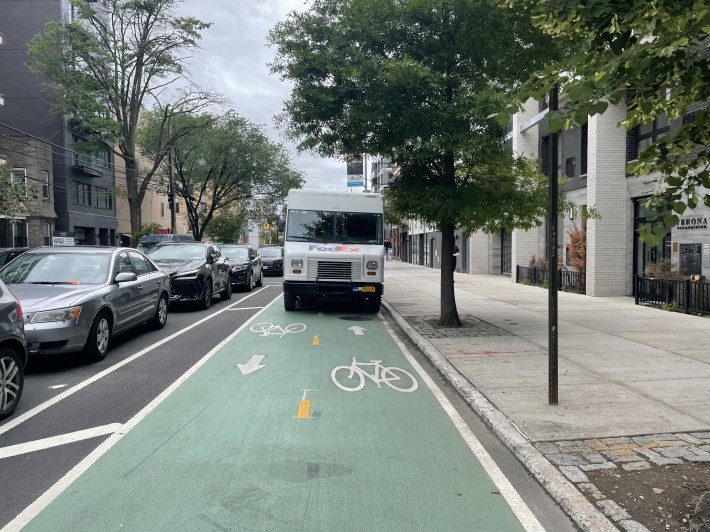
Putting safety over car travel
Astoria, which has seen its share of road violence, as recent as last fall, a driver killed cyclist Amanda Servedio on 37th Avenue in October — adding urgency to any new protected bike infrastructure. On 31st Street, car crashes caused 14 severe injuries — to seven pedestrians, two cyclists and five motor vehicle occupants — and one cyclist death, according to NYPD data. That level of carnage puts the strip in the top 10 percent most dangerous Queens streets.
A 2023 survey by DOT found that only 11 percent of trips done in Astoria were by car, while 34 percent were by bike and 53 percent by foot. The bike boulevard design repurposes space for the majority of those road users, but it hasn't been without controversy. Members of the nearly 33,000-person Facebook page AstoriaCentric routinely post in support of and opposition to the redesign.
During the planning process DOT took comments from residents on the most problematic intersections, which the agency aggregated into a PDF. At many of these highlighted intersections along 31st Avenue, the agency installed some sort of barrier or paints to encourage, and in some cases force, drivers to take safer turns.
